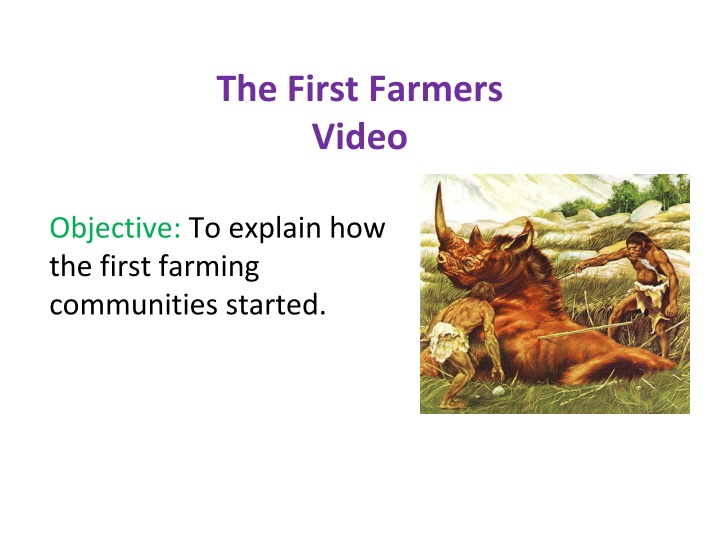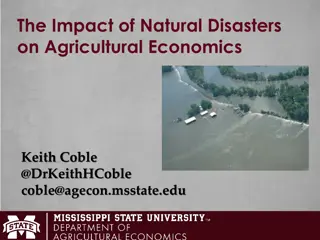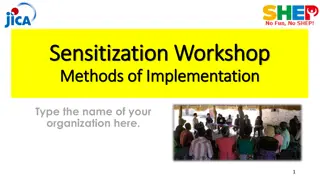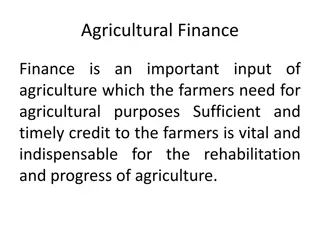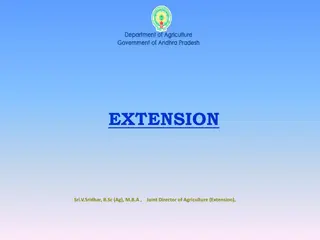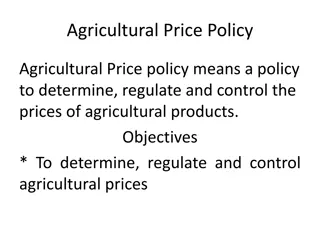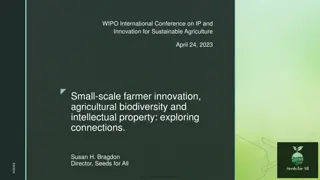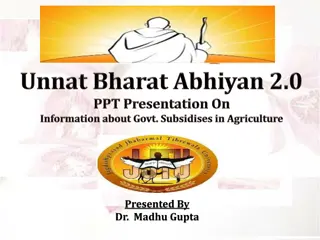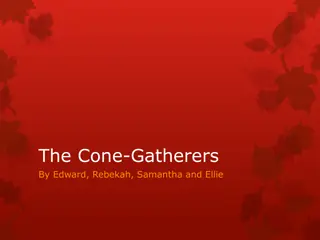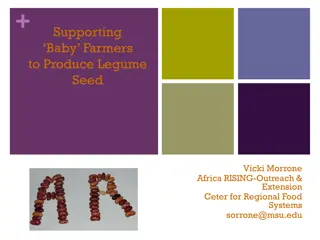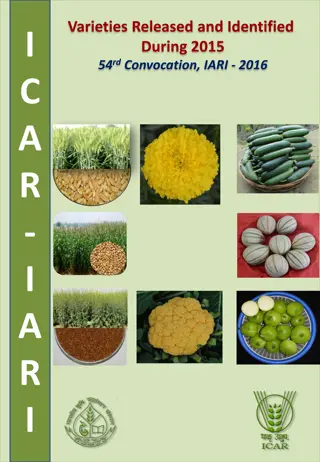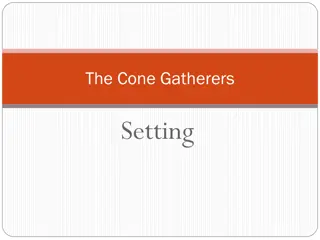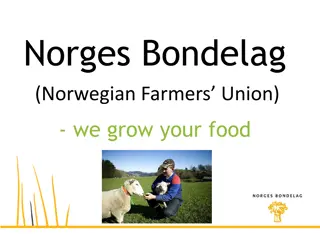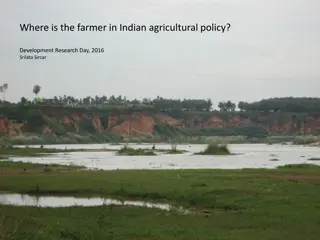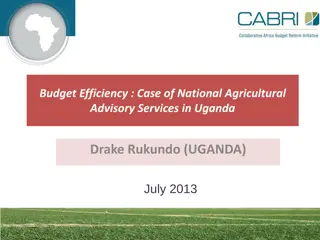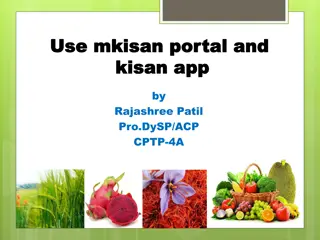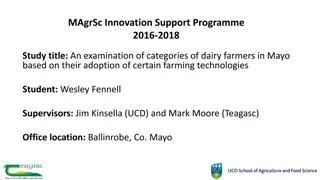The First Farmers: Transition from Hunter-Gatherers to Agricultural Communities
The video explores the transition of early human societies from hunter-gatherers to farming communities in the Fertile Crescent region. It highlights the challenges faced by nomadic groups due to harsh environments and their evolution into settled communities following the discovery of grain and agriculture. Archaeological artifacts shed light on this pivotal shift in human history.
Download Presentation

Please find below an Image/Link to download the presentation.
The content on the website is provided AS IS for your information and personal use only. It may not be sold, licensed, or shared on other websites without obtaining consent from the author.If you encounter any issues during the download, it is possible that the publisher has removed the file from their server.
You are allowed to download the files provided on this website for personal or commercial use, subject to the condition that they are used lawfully. All files are the property of their respective owners.
The content on the website is provided AS IS for your information and personal use only. It may not be sold, licensed, or shared on other websites without obtaining consent from the author.
E N D
Presentation Transcript
The First Farmers Video Objective: To explain how the first farming communities started.
1. Describe the weather and land at the beginning of the video. It is cold and icy there are few trees and animals for food
2. These people are called HUNTER- GATHERERS What are hunter gatherers? People who get food by hunting and collecting plants, fruits, and vegetables.
3. What is life like for these people? They travel all the time and are starving They are one meal away from starvation. What do we call people who travel and have no permanent home? nomads
4. What caused the land and climate to change? The glaciers melted Water made plants grow
5. One of the best places for humans to live was an area in the called the MIDDLE EAST FERTILE CRESCENT
6. The fertile crescent stretches from to ISRAEL IRAQ What made the fertile crescent a good place to live? It had water and good soil for growing plants.
7. How did life change for the hunter-gatherers? There were a lot more plants and animals that could be used for food
8. What did the hunter-gatherers discover that changed their lives? A huge supply of grain What do we use grain for?
9. What artifacts did the archaeologists discover? Headband with shell beads Tool with flint blades w/wheat residue (remains)
10. What problem caused life to change? They had to carry the grain with them, so they decided to live near the grain
11. How many people lived in the first villages? 25-50 people
12. What meats did they eat? Anything that ran, swam, crawled, or flew
13. What did they spend most of their time doing? Making new tools or repairing old tools
14. What were the first gardens? The trash piles How did trash piles become the first gardens? The people threw out the seeds. The trash pile was full of wet rotting food. This cause the seeds to sprout and soon vegetables and fruits were growing.
15. How did these people change their environment to suit their needs? They took their seed supply and planted some of it to grow more
16. Name three ways the harvested wheat was used. Food Shelter baskets
17. Why did the farmers choose this specific location (Zad 2) to settle? A natural Spring was Nearby which Provided fresh water
18. What did archaeologists find to prove that this was a farming community? The remains of burnt seeds
19. The discovery of the larger barley seeds showed that these farmers were Creating new types of barley by only planting the best seeds
20. The farmers still relied on hunting
21. Why did they invent the bow and arrow? To catch faster animals for meat To hunt at a distance for safety
22. Describe the houses in which these farmers lived. Round Mud and rock with grass roofs Fireplace inside
23. Why did they burn the roofs each year? To kill the bugs
24. Why is it now possible for families to be larger? More food More people to do work They do not have to move (remember the nomads had to carry children so they only had 1-2 kids)
25. How does this affect their lives? They have to now continue to grow more and more food The older people teach the younger people.
26. As the population grew, it became necessary to be organized. This required A LEADER
27. What do you think will come next as people learn to live in larger groups? A system of laws to keep order in society.
